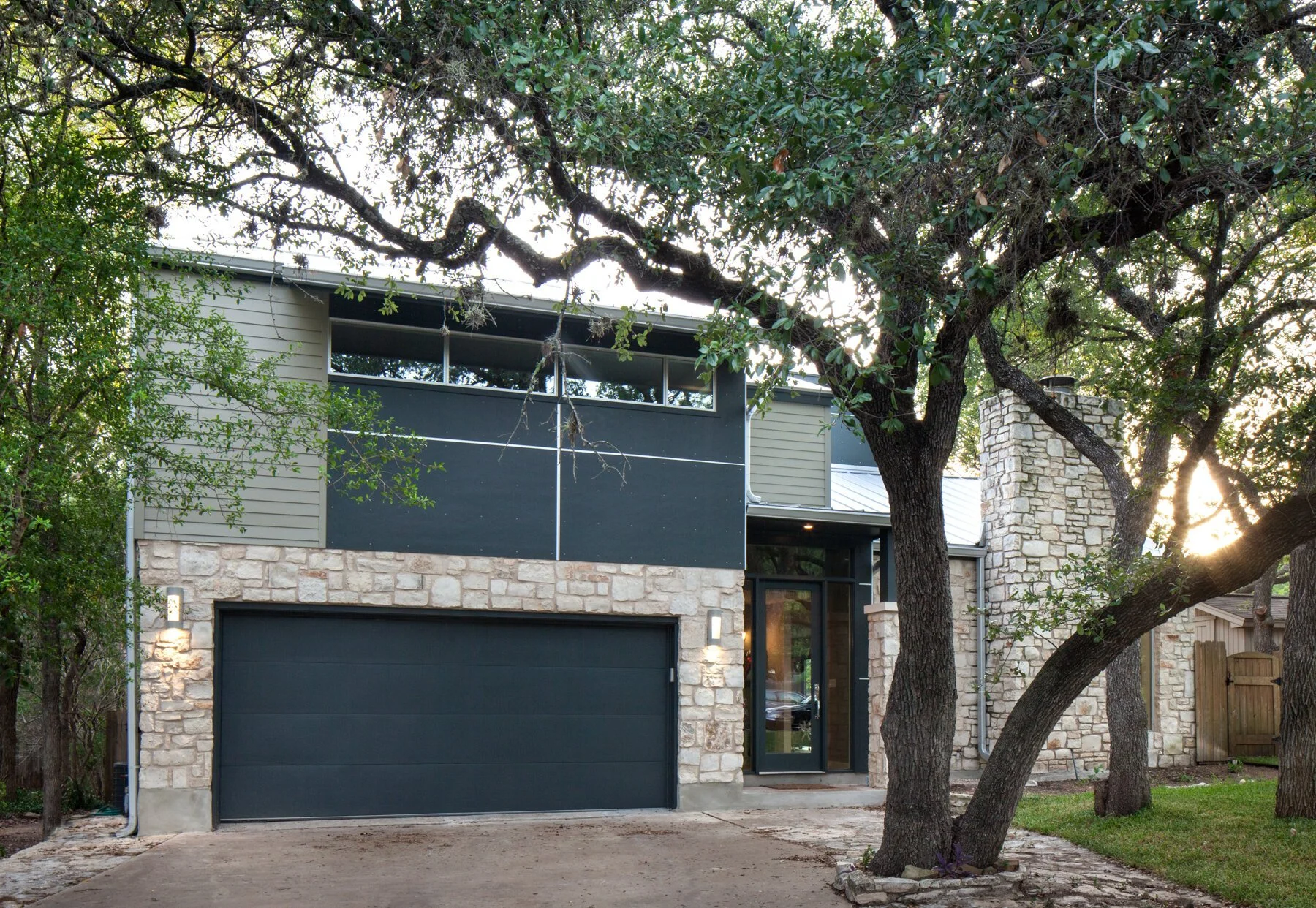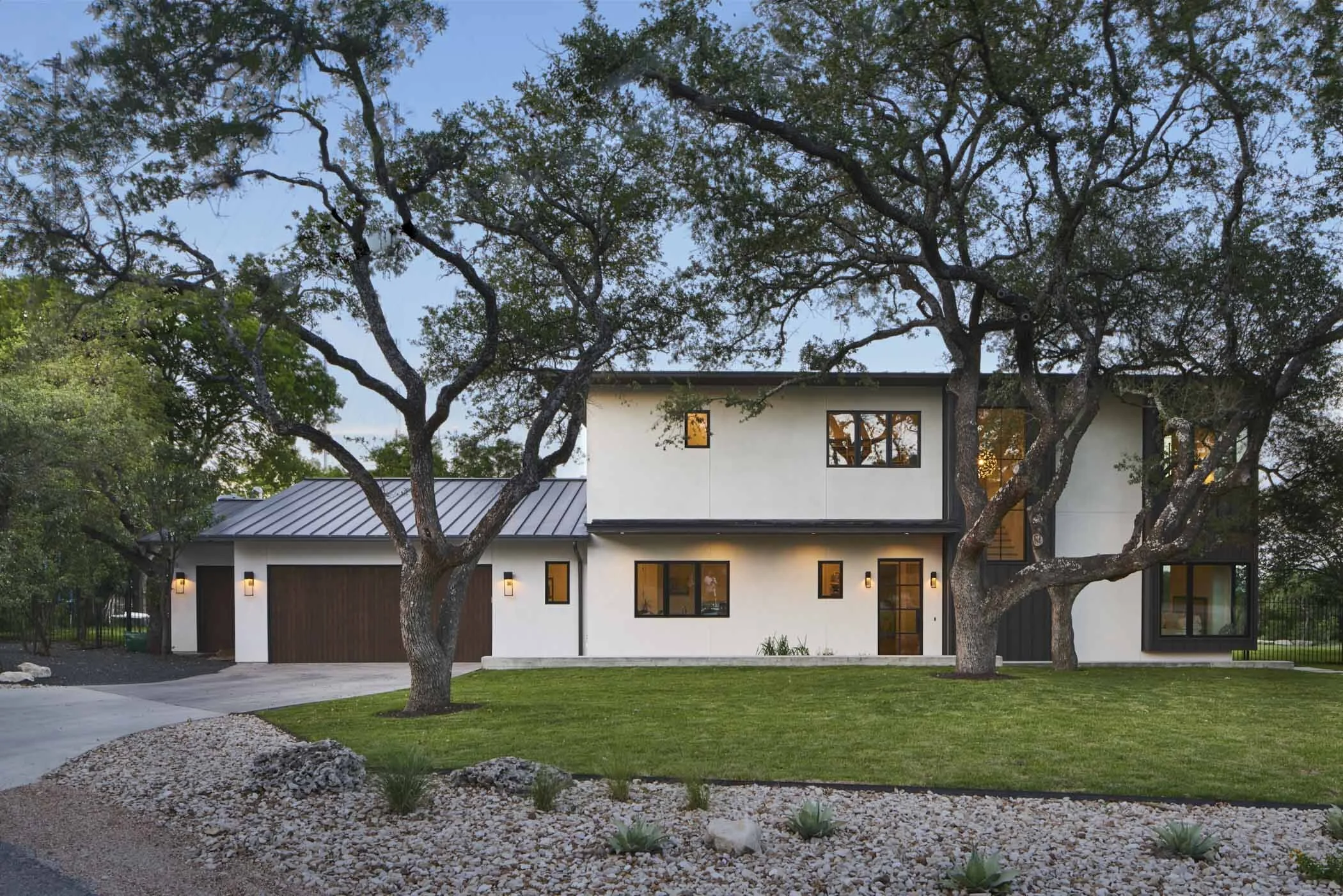Stucco vs. Masonry vs. Siding
Our Austin Architects Explain the Differences Between Stucco, Masonry, and Siding to Help You Choose the Best Option for Your Home’s Exterior
There are three main categories of exterior finishes to choose from when building a house or constructing an addition: stucco, masonry, and siding. For home additions, it’s best to try and match the original material as closely as possible. However, new builds provide a blank canvas that can be intimidating for some homeowners. These three materials all have very different looks and feels, so how do you choose the best one? Our team of architects in Austin, Texas, explains the differences between stucco, masonry, and siding to help you choose the right option for your home.
Exterior Materials/Design by DK Studio
Stucco vs. Masonry vs. Siding: Choose the Best for Your Home
Whether you are planning your first remodel or building your first house, choosing the best materials for the exterior of your home can be a difficult decision-making process. Once the bricks are laid, you can’t go back on your decision! To help you make the right choice, our Austin architects have compiled a list of the pros and cons of stucco, masonry, and siding. Here are our comparisons.
Stucco/Design by DK Studio
Stucco for Your Home’s Exterior
What is Stucco?
Stucco is an exterior finishing material created with a mix of aggregates, binders, and water. Like concrete, stucco is applied wet and hardens into a dense solid. Stucco can last over 50 years when properly maintained.
Types of Stucco
Traditional Stucco
Traditional stucco is a mixture of sand, lime, water, and sometimes cement to add durability. It is applied over a mesh backing to reinforce the material and prevent cracking.
Stucco Tips
Stucco is suited to various climates and builds, lasting for decades when properly maintained. However, proper installation and expansion joint placement are necessary to prevent cracking. In addition, stucco may not be the best exterior finish in areas with expansive soil prone to settling because shifts in the foundation can lead to cracks in the finish.
Stucco Pros and Cons
Pros
Moderately priced
Durable
Color customization
Cons
Can crack with expansion
Colors may fade over time
What is Masonry?
Masonry refers to any building method where individual units are laid or stacked and bound together by mortar. Traditionally, masonry includes brick and stonework. When properly executed, masonry can last over 100 years.
Masonry/Design by DK Studio
Types of Masonry
Brick
Bricks are manufactured clay blocks that come in various colors and are traditionally uniform in size. They are stacked and cemented together with mortar.
Stone
Stone masonry relies on natural stones that are less uniform. They require a skilled mason to interlock them together in a structurally sound and visually appealing way.
Masonry Tips
Brick and stone are porous materials requiring drainage or weep holes to allow any water trapped behind them to escape. In addition, masonry installation relies on the use of brick ties to reinforce the walls and secure them to the home's structure.
Masonry Pros and Cons
Pros
Durable
Fire resistant
Great insulator
Cons
Most expensive option
Longer installation times
Siding for Your Home’s Exterior
What is Siding?
Siding refers to any protective material attached to the exterior wall of a home. Siding styles include horizontal panels, vertical panels, shingles, and board and batten. Depending on the material used, siding can last anywhere from 20 to 50 years.
Types of Siding
Siding/Design by DK Studio
Hardie Board
Hardie Board is a durable, long-lasting, and low-maintenance fiber cement or composite wood product. This type of siding resembles wood, but it doesn’t require nearly as much maintenance. Hardie Board products can be used for siding, trim details, soffits, and corner pieces.
Metal
Metal siding is durable and offers a modern or industrial look. Applying metal siding to a home can add texture, visual interest, and a contemporary edge.
Wood
Wood siding is now a highly specialized product because it requires a lot of maintenance. Typically, wood siding is only seen on older homes, and new orders for the product are placed for restoration projects. Wood siding can be painted or stained in any color imaginable.
Siding Tips
When it comes to siding, our team of architects recommends using Hardie Board for traditional homes and metal for modern homes. Siding comes in a range of colors, so make sure to choose the right exterior paint colors for your home.
Siding Pros and Cons
Pros
Least expensive option
Some options are durable and low maintenance
Cons
Some options don’t last as long
Some options require more maintenance
Is Stucco, Masonry, or Siding Better for Your Home Exterior?
When it comes to stucco, masonry, and siding, no one material is better than the other. Proper installation and routine maintenance are required to prolong the longevity of all three products. So really, the choice between the three comes down to aesthetics and costs.
In order to choose the right finish for your home’s exterior, you need to decide which architectural style is right for you. Different building styles utilize different finishes, colors, and materials. For example, a Mission-style home should be finished in stucco, a Texas Hill Country-style home should feature rustic stone masonry, and Craftsman homes should be clad in siding. Our architects recommend researching the materials, colors, and architectural features used in your desired home style to make informed decisions. If you need help, our team is always here to answer any questions!




